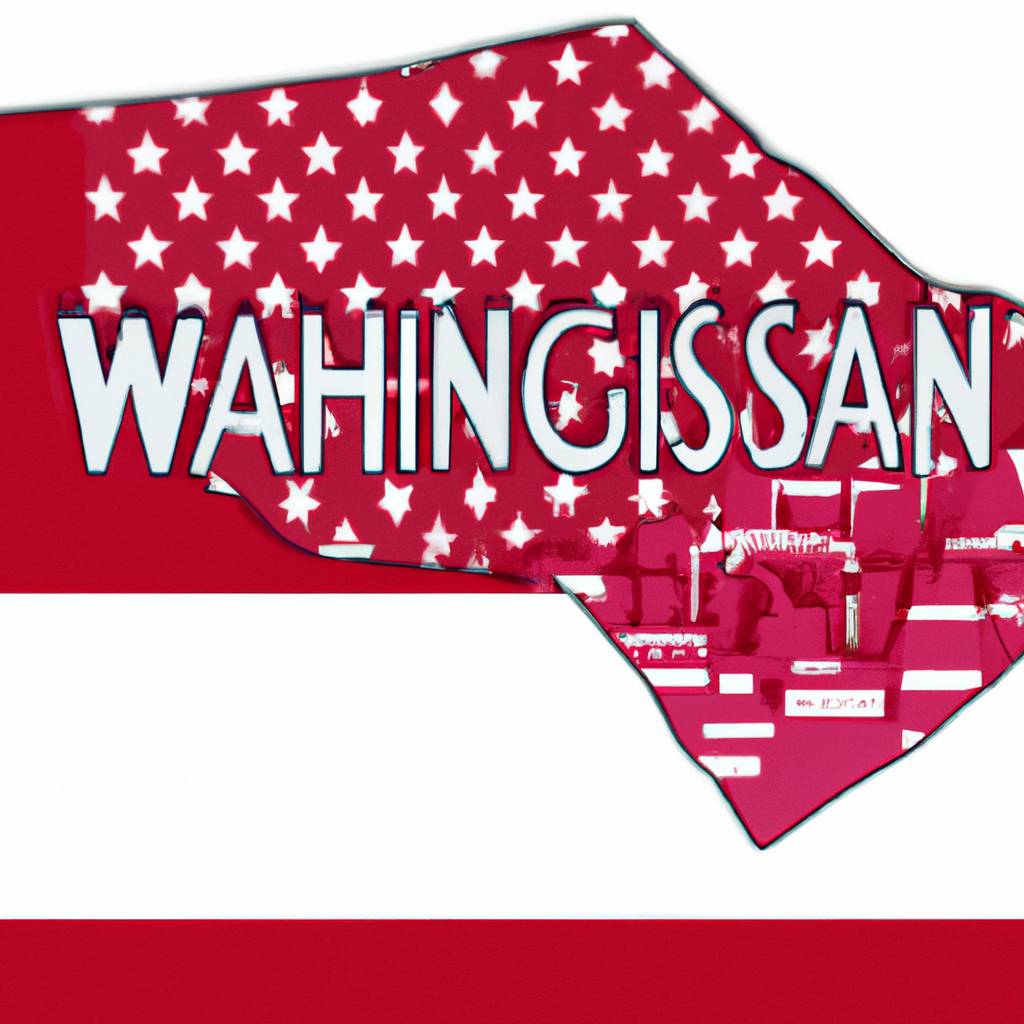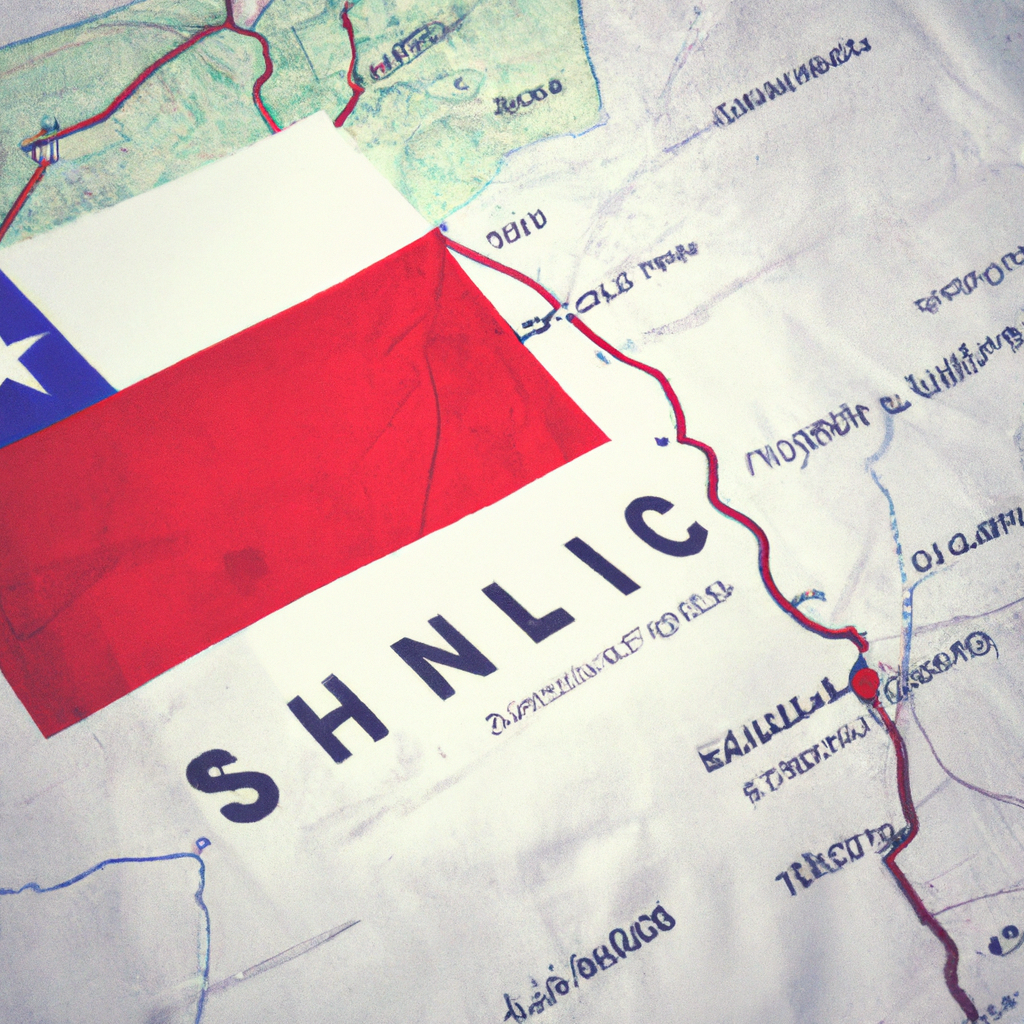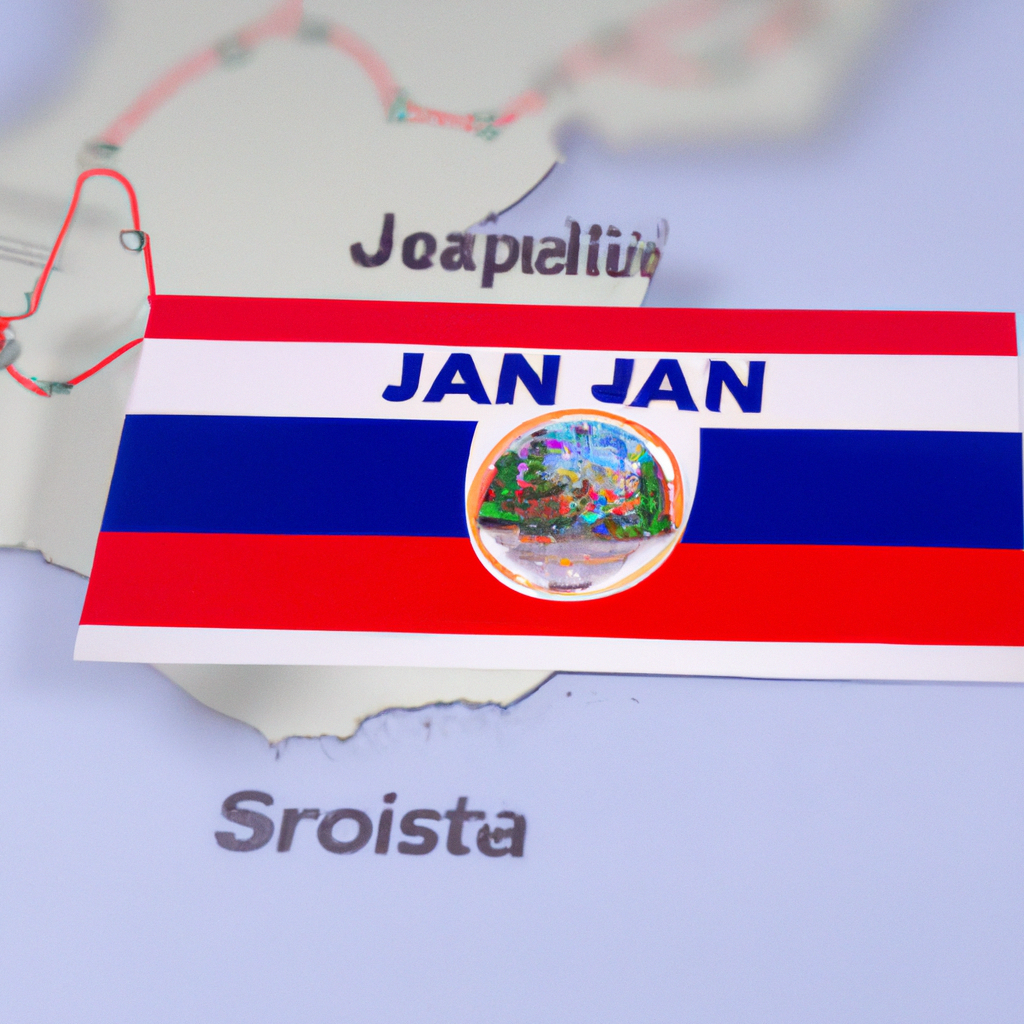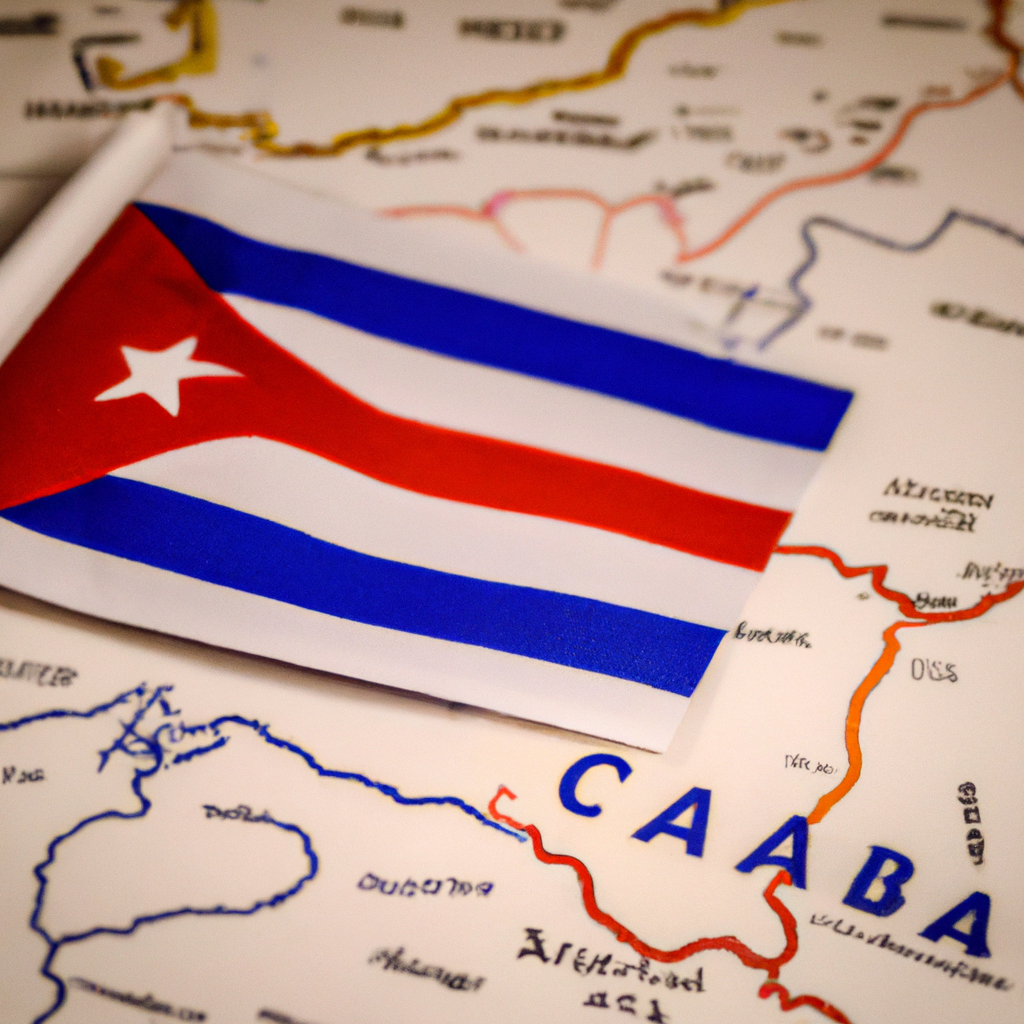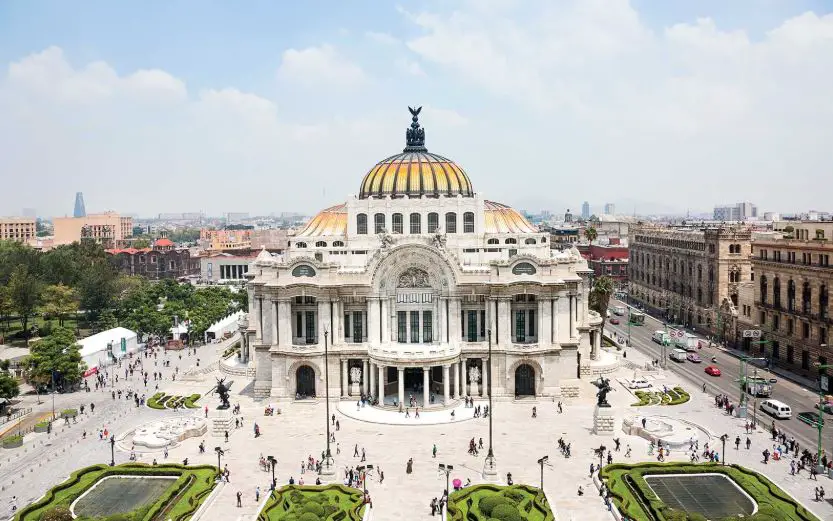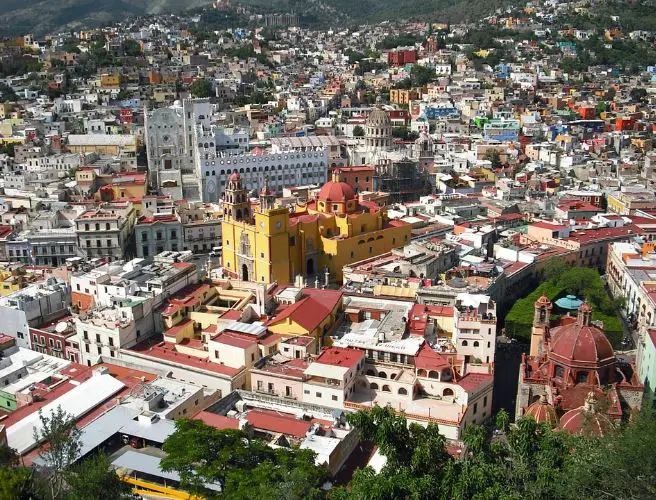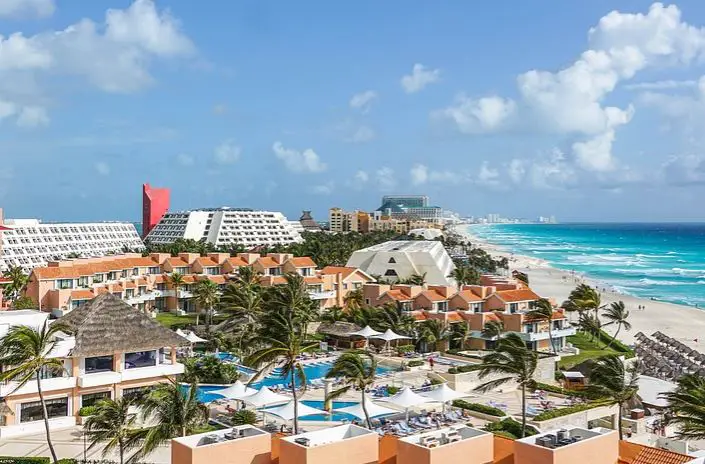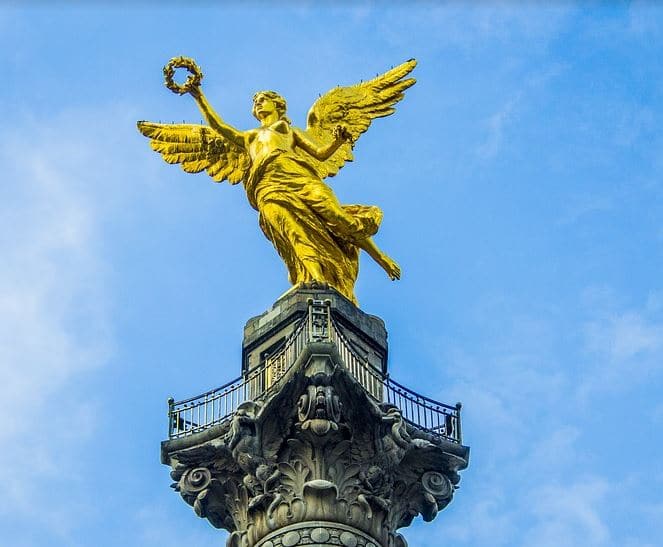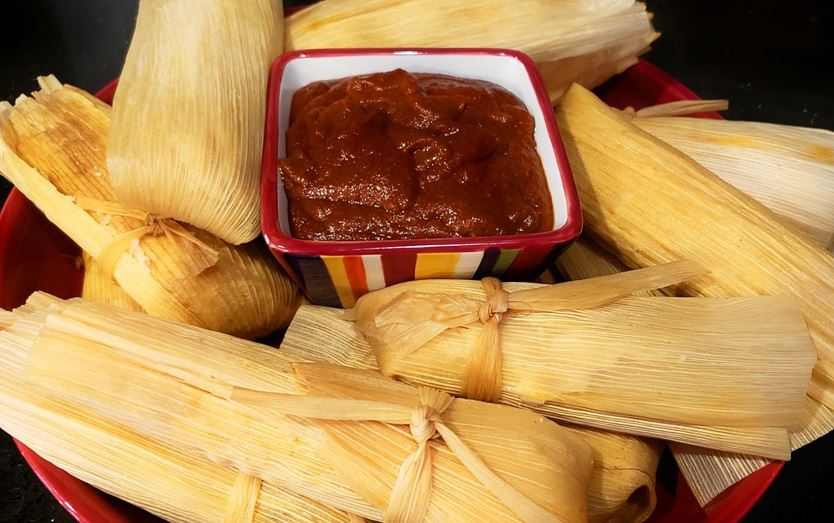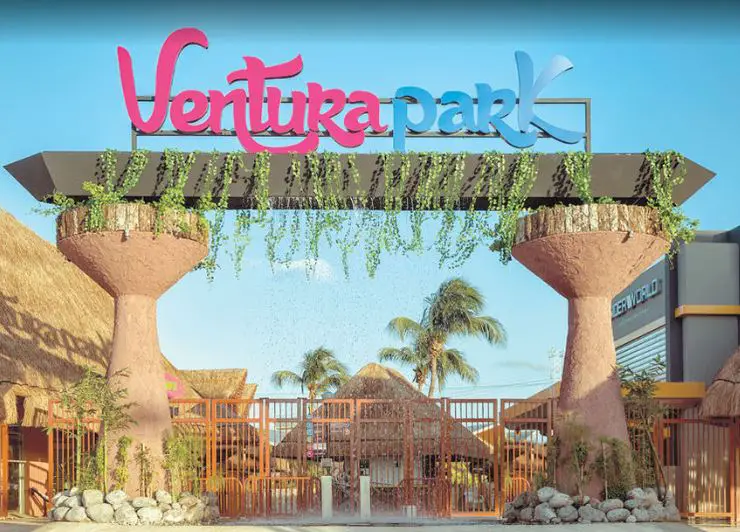Mexico City, Mexico: Interesting Facts,History, Things to do,Why to Visit
Post ByAdequate Travel
Mexico City, Mexico is one of the most vibrant and exciting cities in the world. Famous for its colonial architecture and bustling streets, Mexico City has a lot to offer visitors. It has a rich history, interesting facts, and plenty of things to see and do. Not only is it a great destination for tourists, but you'll also be a witness to the thriving culture and heritage that the city is known for. Furthermore, Mexico City has plenty of attractions and activities to keep you busy, from historic sites and scenic parks to bustling nightlife and trendy cafes. Mexico City is truly a city that will dazzle first-time and veteran travelers alike. So what are you waiting for? Book your tickets and experience Mexico City!
Mexico, officially known as the United Mexican States, is a country located in the southern portion of North America. Its capital is Mexico City. With a population of over 126 million people, Mexico is the 11th most populous country in the world. It has a diverse landscape, ranging from tropical rainforests and deserts to beautiful beaches and mountains.Mexico has a rich cultural heritage, with influences from ancient civilizations such as the Maya and Aztec. It is renowned for its vibrant and colorful festivals, traditional cuisine, and distinct art forms, including mural paintings by famous artists like Diego Rivera.The country has a mixed economy, with a combination of modern industry and agriculture. It is one of the world's largest producers of silver and has a thriving tourism industry, attracting millions of visitors each year to its popular destinations like Cancun, Playa del Carmen, and Tulum. Agriculture is also a significant sector, with Mexico being one of the largest producers of avocados, tomatoes, and tequila.Despite its natural beauty and cultural wealth, Mexico faces several challenges. It has struggled with issues such as drug trafficking and violence, poverty, and corruption. However, efforts have been made to address these problems, including implementing social programs and promoting economic development.Overall, Mexico is a country with a diverse and vibrant culture, a beautiful landscape, and significant economic potential, but also faces ongoing challenges that need to be addressed for its continued growth and development.Discover unique facts about mexico, a destination filled with rich history and natural beauty.
Interesting facts
1. Cultural Diversity:
Mexico is known for its rich cultural heritage and diversity. The country has a unique blend of indigenous, European, and African influences, which can be seen in its art, music, food, and traditional clothing. For example, the traditional Mexican cuisine incorporates a variety of flavors and ingredients, such as corn, chili peppers, and chocolate, which have been passed down through generations.
2. Ancient Civilizations:
Mexico is home to several ancient civilizations that have left a lasting impact on the country's history and architecture. The Mayan, Aztec, and Olmec civilizations were among the most significant. The ruins of their cities, such as Chichen Itza and Teotihuacan, attract tourists from around the world. These ancient civilizations made advancements in fields like astronomy, mathematics, and engineering, which can still be admired today.
3. Biodiversity:
Mexico is one of the world's most biologically diverse countries. It is home to a wide range of ecosystems, including tropical rainforests, deserts, mountains, and coastal areas. This biodiversity is evident in the numerous species of flora and fauna found in Mexico. For instance, Mexico is the natural habitat of various colorful birds like the resplendent quetzal and the toucan.
4. Day of the Dead:
The Day of the Dead, or Dia de los Muertos, is a unique and widely celebrated holiday in Mexico. It is a time to honor and remember deceased family members and friends. Families create colorful altars, known as ofrendas, filled with photographs, favorite foods, and mementos of the departed. The holiday is a combination of ancient Aztec beliefs and Catholicism and is a testament to Mexico's vibrant cultural traditions.
5. Beautiful Beaches:
Mexico is blessed with stunning coastlines and beautiful beaches along both the Pacific Ocean and the Caribbean Sea. Popular beach destinations include Cancun, Playa del Carmen, Tulum, Acapulco, and Puerto Vallarta. These beaches offer crystal-clear waters, white sandy beaches, and opportunities for various water sports such as snorkeling, scuba diving, and surfing.
From museums to parks,mexico tourist attractions offer something for everyone, making it a versatile destination for all type of tourists.The History of Mexico
Mexico has a rich and fascinating history that dates back thousands of years. Here, we will explore the key events and developments that have shaped the country's past:
Early Civilizations and Pre-Columbian Era
Before the arrival of the Spanish conquistadors in the 16th century, Mexico was home to several advanced indigenous civilizations. One of the most notable was the Aztec Empire, which reached its height in the 15th century. The Aztecs built a sophisticated empire with Tenochtitlan (present-day Mexico City) as its capital. They had a complex social structure, developed agriculture, and practiced elaborate religious rituals.
Another significant civilization was the Maya, who inhabited the Yucatan Peninsula and other parts of southern Mexico. The Maya developed a highly advanced writing system, made significant advancements in mathematics and astronomy, and built impressive cities and ceremonial centers.
Spanish Conquest and Colonial Rule
In 1519, the Spanish conquistador Hernan Cortes led an expedition to Mexico and eventually conquered the Aztec Empire. The conquest of Mexico resulted in the establishment of Spanish colonial rule, which lasted for over three centuries. During this period, Mexico, known as New Spain, became an important center of Spanish influence and power in the Americas.
The Spanish colonization brought significant changes to Mexico. The Spanish introduced Christianity and imposed their language and culture on the indigenous population. They also exploited Mexico's resources, particularly silver mines, and established a rigid social hierarchy that favored those of Spanish descent.
Independence from Spain
Mexico gained its independence from Spain in 1821 after a long and bloody struggle for freedom. The movement for independence was led by figures such as Miguel Hidalgo and Jose Maria Morelos. The newly independent Mexico faced various challenges, including the struggle for political stability, territorial disputes, and economic instability.
Mexican-American War
In the mid-19th century, Mexico faced another significant event in its history, the Mexican-American War. This conflict arose from a dispute over the border between Mexico and the United States, with both countries claiming ownership of Texas. The war ended in 1848 with the signing of the Treaty of Guadalupe Hidalgo, in which Mexico ceded a significant portion of its territory to the United States, including present-day California, Nevada, Utah, Arizona, New Mexico, and parts of Colorado and Wyoming.
Mexican Revolution
One of the most transformative periods in Mexico's history was the Mexican Revolution, which took place from 1910 to 1920. The revolution was sparked by widespread social and economic inequality, political corruption, and the oppressive rule of President Porfirio Diaz. Various factions and leaders emerged during the revolution, including Emiliano Zapata and Francisco Villa, advocating for land reform, workers' rights, and social justice.
The Mexican Revolution resulted in the overthrow of Diaz's regime and the establishment of a more democratic government. It also led to significant social and cultural changes, including the recognition of indigenous rights and the promotion of arts and literature that celebrated Mexican identity.
Modern Mexico
Since the Mexican Revolution, Mexico has experienced periods of political stability, economic growth, and social progress, as well as occasional challenges and setbacks. The country has also witnessed significant political and economic reforms, such as the nationalization of industries and the implementation of free trade agreements.
Today, Mexico remains a diverse and vibrant nation, with a rich cultural heritage that blends indigenous, Spanish, and other influences. Its history continues to shape its present and future, making it a fascinating country to explore.
Exploring the rich heritage of historical sites in mexico is a journey through time and culture.Famous Things of Mexico
1. Mexican Cuisine:
Mexico is famous for its delicious and diverse cuisine, which includes dishes such as tacos, enchiladas, tamales, and guacamole. Mexican food is known for its unique flavors, the use of spices, and the variety of ingredients used in their recipes. Some popular examples of Mexican cuisine are:
- Tacos al pastor
- Mole poblano
- Ceviche
- Chiles en nogada
- Tostadas
2. Ancient Mayan Ruins:
Mexico is home to many ancient Mayan ruins that attract tourists from all over the world. These ruins serve as a reminder of the rich history and cultural heritage of the Mayan civilization. Some famous examples of Mayan ruins in Mexico include:
- Chichen Itza
- Tulum
- Palenque
- Uxmal
- Teotihuacan
3. Mariachi Music:
Mariachi music is an essential part of Mexican culture and is recognized globally for its vibrant and lively tunes. It is a traditional form of music that typically includes trumpets, guitars, violins, and vocals. Mariachi bands can be found performing in many Mexican festivals and celebrations. Examples of famous Mariachi songs include:
- "El Rey"
- "Cielito Lindo"
- "La Bamba"
- "Guadalajara"
- "Volver, Volver"
4. Day of the Dead:
The Day of the Dead, or Día de los Muertos, is a significant and distinctive Mexican holiday. It is a time to honor and remember deceased loved ones. During this celebration, families create altars with photographs and mementos of the deceased, decorate with marigold flowers, and prepare their favorite foods. This tradition showcases the vibrant culture and close connection Mexicans have with their heritage.
5. Mexican Handicrafts:
Mexico is known for its exquisite handicrafts, which reflect the talent and creativity of its artisans. These handicrafts often incorporate vibrant colors, intricate designs, and traditional techniques. Some famous Mexican handicrafts include:
- Talavera pottery
- Alebrijes (colorful wooden sculptures)
- Textiles such as embroidered clothing and woven rugs
- Papier-mâché piñatas
- Traditional silver jewelry
Culture of Mexico
Mexico has a rich and diverse culture that has been shaped by ancient civilizations, Spanish colonization, and various influences from other parts of the world. This cultural amalgamation is reflected in the country's language, traditions, art, music, architecture, and cuisine.1. Language:
The official language of Mexico is Spanish, and it is widely spoken throughout the country. However, there are also several indigenous languages that are spoken by indigenous communities, such as Mayan, Nahuatl, and Zapotec. The preservation and promotion of indigenous languages is an important aspect of Mexican culture and identity.2. Traditions:
Mexico is known for its vibrant and colorful traditions. One of the most well-known traditions is the Day of the Dead (Dia de los Muertos), which is celebrated on November 1st and 2nd. During this time, families honor and remember their deceased loved ones through elaborate altars, sugar skulls, and marigold flowers. Other important traditions include Independence Day (September 16th), Christmas celebrations (Posadas, Nochebuena), and various regional festivals.3. Art and Music:
Mexican art and music are incredibly diverse and have a strong connection to the country's indigenous roots. Traditional Mexican art includes vibrant paintings, pottery, textiles, and intricate crafts, often featuring motifs inspired by nature and mythology. Music is an integral part of Mexican culture, with various genres like Mariachi, Ranchera, Banda, and Cumbia. Dance also plays a significant role, with traditional folk dances like Jarabe Tapatio and Danza de los Voladores.4. Architecture:
Mexico is home to a wide range of architectural styles, influenced by the country's history and various civilizations. Pre-Columbian ruins, such as Teotihuacan and Chichen Itza, showcase the grandeur of ancient civilizations. Spanish colonial architecture, characterized by colorful facades and intricate details, can be seen in cities like Mexico City, Oaxaca, and Guanajuato. Modern architecture also thrives in cities like Mexico City, with examples like the Museum Soumaya and the National Museum of Anthropology.5. Cuisine:
Mexican cuisine is internationally renowned for its flavors, colors, and variety. Traditional dishes often feature ingredients such as corn, beans, chilies, tomatoes, and avocados. Tacos, tamales, enchiladas, mole, and guacamole are just a few examples of iconic Mexican dishes. The country's cuisine also includes a wide range of regional specialties, such as Yucatecan, Oaxacan, and Pueblan cuisine. Mexican street food culture is also popular, with food stalls offering delicious treats like tacos al pastor, elotes, and churros.Immerse yourself in the local culture by exploring mexico's top-rated tourist attractions.Cuisine of Mexico
Mexican cuisine is known for its vibrant flavors, rich spices, and diverse ingredients, making it one of the most popular and influential cuisines in the world. The traditional Mexican cuisine has a strong influence from Aztec and Maya cultures along with Spanish colonization.
Characteristics of Mexican Cuisine
1. Spice and Flavor: Mexican cuisine is famous for its use of spices such as chili peppers, cumin, oregano, and garlic. These spices add heat and depth of flavor to various dishes like salsa, mole, and adobo.
2. Corn and Wheat: Corn and wheat are the staple grains of Mexico. Corn is used to make tortillas, tamales, and a wide variety of dishes. Wheat is used for bread, flour tortillas, and pastries.
3. Mole Sauces: Mole sauces are an essential part of Mexican cuisine. These are complex sauces made from a combination of chili peppers, nuts, seeds, spices, and sometimes even chocolate. Mole is often served over poultry or meat.
4. Fresh Ingredients: Mexican cuisine emphasizes the use of fresh and locally sourced ingredients. Fresh fruits, vegetables, herbs, and seafood play a significant role in Mexican dishes.
Regional Cuisines in Mexico
1. Oaxacan Cuisine: Oaxaca is known as the culinary capital of Mexico. It is famous for its mole sauces, tlayudas (giant tortillas with various toppings), and traditional dishes like tamale oaxaqueño and tejate.
2. Yucatecan Cuisine: Yucatecan cuisine is influenced by Mayan flavors and ingredients. It features unique dishes like cochinita pibil (slow-cooked pork), pavo en relleno negro (turkey in black sauce), and sopa de lima (lime soup).
3. Veracruz Cuisine: Located on the coast, Veracruz cuisine heavily incorporates seafood in dishes like huachinango a la Veracruzana (red snapper in Veracruz sauce). It also includes tropical fruits, vanilla, and corn-based dishes.
4. Jalisco Cuisine: Jalisco is the birthplace of many iconic Mexican dishes such as birria (spicy meat stew), tequila, and traditional tortas ahogadas (drowned sandwiches).
5. Pueblan Cuisine: Puebla is known for its moles, especially mole poblano, which is a rich and flavorful sauce made from chocolate and chili peppers. Other notable dishes include chiles en nogada and cemitas (sandwiches with specific toppings).
Conclusion
Mexican cuisine is a diverse and flavorful culinary tradition that showcases the rich heritage and vibrant culture of Mexico. From the spiciness of chilies to the richness of mole sauces, every region in Mexico offers unique and delicious dishes that have become famous worldwide.
Discover the untold stories behind mexico unique facts, and historical treasures.Beach hopping in Cancun
One of the top things to do in Mexico is to go beach hopping in Cancun. This famous tourist destination is known for its pristine white sand beaches and turquoise waters. Some popular beaches in Cancun include Playa Delfines, Playa Tortugas, and Playa Norte. You can spend your day relaxing on the beach, indulging in water sports activities, or simply enjoying the stunning views.
Exploring the Mayan ruins of Chichen Itza
A visit to Mexico is incomplete without exploring the Mayan ruins of Chichen Itza. This ancient city was once a thriving center of the Mayan civilization and is now a UNESCO World Heritage site. The iconic El Castillo pyramid, Temple of the Warriors, and the Great Ball Court are some of the fascinating structures you can discover. Don't forget to learn about the rich history and myths associated with Chichen Itza from a knowledgeable guide.
Witnessing the Monarch Butterfly migration
If you're visiting Mexico between November and March, a must-see natural phenomenon is the Monarch Butterfly migration. Millions of butterflies migrate from Canada and the U.S. to the forests of Mexico for their winter hibernation. The Monarch Butterfly Biosphere Reserve in Michoacán is one of the best places to witness this breathtaking spectacle. You can hike through the forest trails and marvel at the stunning sight of millions of butterflies covering the trees.
Exploring the underwater world of Cozumel
Cozumel is a paradise for scuba diving and snorkeling enthusiasts. This Mexican island is part of the Mesoamerican Barrier Reef, the second largest coral reef system in the world. Get ready to explore vibrant coral gardens, swim alongside colorful fish, and maybe even encounter sea turtles and rays. Palancar Reef and Columbia Reef are popular dive sites offering incredible underwater experiences.
Immersing in the culture of Mexico City
Mexico City, the bustling capital, offers a rich cultural experience. Visit the historic center, declared a UNESCO World Heritage site, and explore landmarks like the Metropolitan Cathedral, National Palace, and the Templo Mayor archaeological site. Don't miss the opportunity to taste authentic Mexican cuisine, such as tacos, tamales, and mole. Also, immerse yourself in the artistic scene by visiting renowned museums like the Frida Kahlo Museum and the National Museum of Anthropology.
When planning your trip to mexico, be sure to include the best things to do in mexico, which encompass a wide range of cultural experiences.Climate of Mexico
The climate of Mexico is highly diverse due to its varied topography and size. The country is located in the tropical and temperate zones, resulting in a wide range of climates across different regions.
Tropical Climate
- The coastal regions of Mexico, particularly along the Gulf of Mexico and the Pacific coast, experience a tropical climate. These areas have high temperatures and high humidity throughout the year.
- Examples of cities with a tropical climate include Cancun, Acapulco, and Veracruz, where average temperatures range from 25-30°C (77-86°F) and there is significant rainfall.
Temperate Climate
- In the central part of Mexico, including Mexico City, a temperate climate prevails. The altitude and mountainous terrain in this region contribute to cooler temperatures compared to the coastal areas.
- Examples of cities with a temperate climate include Mexico City, Guadalajara, and Puebla, where average temperatures range from 15-25°C (59-77°F) and the rainfall is more moderate compared to the coastal areas.
Desert Climate
- Parts of Mexico, such as the northern region and Baja California, have a desert climate. These areas experience hot and dry conditions throughout the year with very little rainfall.
- Examples of cities with a desert climate include Hermosillo, Ciudad Juarez, and La Paz, where average temperatures can exceed 35°C (95°F) during the summer months and rainfall is minimal.
Mountainous Climate
- The mountainous regions of Mexico, including the Sierra Madre Oriental and Sierra Madre Occidental, have a cooler and more temperate climate due to their higher elevations.
- Examples of cities with a mountainous climate include Monterrey, Chihuahua, and Durango, where average temperatures range from 10-20°C (50-68°F) and there is a significant temperature drop during the winter months.
Coastal Climate
- Along Mexico's coastlines, the climate varies depending on the specific location. The Pacific coast tends to have hotter and more humid conditions, while the Gulf of Mexico coast experiences slightly milder temperatures, especially during the winter months.
- Examples of cities with a coastal climate include Puerto Vallarta, Cozumel, and Tampico, where average temperatures range from 20-30°C (68-86°F) and there may be a higher risk of hurricanes during the hurricane season.
In conclusion, Mexico's climate is highly diverse, encompassing tropical, temperate, desert, mountainous, and coastal climates. The country's geography and topography contribute to this climate variation. Whether you prefer warm beaches, cool mountains, or dry deserts, Mexico offers a climate to suit various preferences and interests.
Discover unique facts about mexico, a destination filled with rich history and natural beauty.Popular activities in Mexico
1. Exploring ancient ruins
Mexico is home to numerous ancient Mayan and Aztec ruins, offering a glimpse into the country's rich history. Some popular ruins to visit include Chichen Itza, Tulum, Teotihuacan, and Palenque.2. Enjoying beautiful beaches
Mexico boasts stunning coastlines with crystal-clear waters and white sandy beaches. Visitors can relax, swim, sunbathe, and engage in water sports such as snorkeling, diving, and surfing. The beaches of Cancun, Playa del Carmen, and Puerto Vallarta are among the most famous destinations.3. Indulging in Mexican cuisine
Exploring the diverse flavors of Mexican cuisine is a must-do activity in Mexico. From traditional street food like tacos and tamales to gourmet dishes, the country has a wide range of gastronomic experiences to offer. Trying authentic dishes such as mole, ceviche, and chiles en nogada is highly recommended.4. Visiting colonial cities
Mexico has several well-preserved colonial cities that showcase the country's architectural and cultural heritage. Exploring cities like Mexico City, Guanajuato, Oaxaca, and San Miguel de Allende allows visitors to admire stunning colonial buildings, visit historic sites, and immerse themselves in the local culture.5. Participating in Day of the Dead celebrations
The Day of the Dead (Dia de los Muertos) is a unique and vibrant Mexican celebration honoring deceased loved ones. It involves elaborate altars, colorful decorations, parades, and traditional foods. Mexico City, Oaxaca, and Mixquic are renowned for their elaborate Day of the Dead festivities.Plan your trip with a list of the best things to do in mexico, catering to all interests.Nightlife in Mexico
Mexico is known for its vibrant nightlife and bustling entertainment scene. From the bustling city streets to the beachside clubs, there are numerous options for those looking to party the night away. Here are some highlights of Mexico's nightlife scene:
1. Mexico City
Mexico City is renowned for its diverse nightlife options. The city offers an array of nightclubs, bars, and live music venues catering to all tastes. From trendy rooftop bars with stunning city views to underground clubs hosting electronic music DJs, there is something for everyone in the capital.
2. Cancun
Cancun is a popular tourist destination known for its vibrant nightlife. The hotel zone in Cancun is lined with nightclubs and bars, offering a mix of electronic, pop, and Latin music. The city also hosts numerous beach parties, where visitors can dance to rhythmic beats with the ocean as their backdrop.
3. Playa del Carmen
Playa del Carmen, located on the Riviera Maya, is another hotspot for nightlife in Mexico. The famous 5th Avenue is filled with bars, clubs, and restaurants, creating a lively atmosphere. Here, visitors can enjoy live music, salsa dancing, and beachfront lounges.
4. Puerto Vallarta
Puerto Vallarta offers a diverse range of nightlife options, particularly in the romantic zone. From laid-back beach bars to upscale clubs, visitors can enjoy live music, cabaret shows, and even drag queen performances. The city is also known for its LGBTQ+ friendly venues.
5. Tijuana
Tijuana, located on the Mexico-US border, is known for its vibrant nightlife. Avenida Revolución is a popular street lined with bars, clubs, and street performers. Visitors can enjoy live music, Mariachi bands, and dance to local rhythms such as Norteño and Banda.
6. Guadalajara
Guadalajara, the second-largest city in Mexico, offers a lively and diverse nightlife scene. The city is known for its pre-Hispanic cantinas, where visitors can drink traditional Mexican spirits and enjoy live music. Additionally, Guadalajara boasts a thriving LGBTQ+ scene with bars, clubs, and drag shows.
Overall, Mexico offers a rich and vibrant nightlife scene with options to suit all tastes. Whether you're looking to dance the night away at a trendy club in Mexico City or enjoy a relaxing evening at a beachside bar in Playa del Carmen, Mexico's nightlife has something for everyone.Uncover the best mexico attractions that will leave you awe-inspired and wanting more.Why to Visit Mexico
Mexico is a country that offers a diverse range of attractions and experiences that make it worth visiting. Here are some key reasons why you should consider visiting Mexico:Rich Cultural Heritage
Mexico has a rich cultural heritage that is evident in its archaeological sites, such as Chichen Itza and Teotihuacan, which showcase the ancient Mayan and Aztec civilizations. The country is also well-known for its vibrant arts scene, with colorful festivals, traditional music and dance, and unique crafts like Talavera pottery and Oaxacan woodcarvings.Breathtaking Natural Beauty
Mexico is blessed with spectacular natural landscapes, from pristine beaches along the Caribbean and Pacific coasts to lush jungles, rugged mountains, and breathtaking canyons. Examples include the crystal-clear waters of the cenotes in the Yucatan Peninsula, the stunning Copper Canyon in Chihuahua, and the diverse marine life in the Sea of Cortez.Delicious Cuisine
Mexican cuisine is renowned worldwide for its flavors, aromas, and variety. From street food like tacos and tamales to traditional dishes like mole and ceviche, there is something to satisfy every palate. Each region in Mexico has its specialties, such as Yucatecan cuisine with its unique flavors derived from Mayan traditions and Oaxacan cuisine known for its rich moles and chapulines (grasshoppers).Hospitality and Friendly People
Mexicans are known for their warm hospitality and friendly nature. Visitors often comment on the welcoming and helpful attitude of locals, making it a pleasant experience for travelers. Whether you are exploring historical sites, relaxing on a beach, or participating in cultural events, you are likely to encounter friendly interaction with the locals.Diverse Activities and Adventures
Mexico offers a wide range of activities and adventures for all types of travelers. Whether you enjoy water sports like snorkeling and scuba diving, hiking through ancient ruins, exploring vibrant markets, or indulging in wellness retreats, Mexico has something to offer. For example, you can visit the colonial city of San Miguel de Allende, go whale-watching in Baja California, or take a boat tour through the Sumidero Canyon in Chiapas.In conclusion, Mexico is a country that appeals to travelers with its rich cultural heritage, natural beauty, delicious cuisine, friendly people, and diverse range of activities and adventures. Whether you are seeking history, relaxation, adventure, or culinary experiences, Mexico provides a compelling destination to explore and enjoy.Whether you're a history buff or an adventure seeker, mexico has an attraction for you. So, don't miss the chance to visit popular places in mexicoNumber of Days Required to Visit Mexico
When planning a visit to Mexico, the number of days required can vary depending on various factors such as your travel goals, budget, and the specific locations you plan to visit. Here are some important points to consider:
1. Travel Goals:
Determine what you want to experience during your trip to Mexico. Are you interested in exploring historical sites, relaxing on beautiful beaches, immersing yourself in local culture, or trying different culinary delights? The more diverse your travel goals, the more time you will need to spend in Mexico.
2. Destinations:
Mexico is a vast country with a rich cultural heritage and numerous tourist destinations. The number of days required will depend on the specific cities or regions you plan to visit. For example, a trip focused on Mexico City and its surrounding attractions may require around 4-5 days, while a visit to popular beach destinations like Cancun or Tulum may require at least a week.
3. Itinerary:
Plan a detailed itinerary to make the most of your time in Mexico. Consider the travel time between destinations and how much time you would like to spend in each place. This will help you determine the total number of days required for your trip.
4. Time for Relaxation:
It's essential to allocate some leisure time during your trip to Mexico. Taking into account rest and relaxation will ensure you have a more enjoyable and fulfilling experience. Whether it's spending a day at the beach or exploring local markets at a leisurely pace, having some downtime is important.
Example Itinerary:
Here is an example of a 10-day itinerary to give you an idea of how many days you may need for a trip to Mexico:
- Day 1-2: Mexico City (exploring historical sites, museums, and culinary experiences)
- Day 3-4: Oaxaca City (visiting ancient ruins, traditional markets, and trying local cuisine)
- Day 5-7: Riviera Maya (enjoying beautiful beaches, snorkeling, and visiting Mayan ruins)
- Day 8-10: Guadalajara and Tequila (exploring the vibrant city, visiting tequila distilleries, and experiencing Mexican nightlife)
Remember that this is just one example, and your ideal itinerary may vary depending on your preferences. It's important to plan your trip well in advance to ensure you have enough time to visit all the places you desire.
Discover the untold stories behind mexico unique facts, and historical treasures.Significance of Mexico
Mexico is a country located in North America, and it holds significant historical, cultural, economic, and political importance. Below are some key points highlighting the significance of Mexico:
1. Historical Significance
Mexico has a rich and diverse history that dates back thousands of years, with ancient civilizations such as the Mayans, Aztecs, and Olmecs. These civilizations made significant contributions to architecture, mathematics, agriculture, and astronomy. The ruins of their cities, like Chichen Itza and Teotihuacan, attract millions of tourists each year.
2. Cultural Significance
Mexico is renowned for its vibrant and diverse culture, which is a blend of indigenous, European, and African influences. Mexican art, music, cuisine, and traditions have gained global recognition. The UNESCO World Heritage List includes various Mexican cultural sites, including historic centers of cities such as Mexico City, Oaxaca, and Guanajuato.
3. Economic Significance
Mexico has one of the largest economies in the world, being the 11th largest by GDP. It is a major player in international trade, particularly due to its proximity to the United States. Mexico is known for its manufacturing sector, with industries such as automotive, electronics, and aerospace contributing significantly to its economy.
4. Political Significance
Mexico is a democratic republic with a federal government. It has been considered a regional power in Latin America and an influential player in international affairs. Mexico has managed to maintain political stability despite some challenges, and it actively participates in global organizations such as the United Nations and the Organization of American States.
Examples of Significance:
- Mexico's historical significance can be seen in its ancient ruins, such as the pyramids of Chichen Itza and the temples of Teotihuacan.
- Mexican culture is celebrated worldwide through events such as Dia de los Muertos (Day of the Dead) and traditional dances like the Jarabe Tapatío (Mexican Hat Dance).
- The automotive industry in Mexico, with major car manufacturers establishing production plants, is a significant contributor to the country's economy.
- Mexico's political significance can be observed through its involvement in regional and global diplomatic initiatives, as well as its efforts to address issues such as immigration and drug trafficking.
From hidden gems to iconic landmarks, mexico has something for every traveler's taste.Here are some frequently asked questions (FAQs) about Mexico:
1. What is the official language of Mexico?
The official language of Mexico is Spanish. It is spoken by the majority of the population and is used for official communication, education, and business purposes. In addition to Spanish, there are also 68 recognized indigenous languages in Mexico, such as Nahuatl, Maya, and Zapotec.
2. What is the currency in Mexico?
The currency in Mexico is the Mexican Peso (MXN). It is denoted by the symbol "$" and is divided into 100 centavos. Coins are available in denominations of 1, 2, 5, 10, and 20 pesos, while banknotes come in denominations of 20, 50, 100, 200, 500, and 1,000 pesos.
3. What are some famous tourist destinations in Mexico?
Mexico is known for its rich cultural heritage and stunning natural landscapes. Some popular tourist destinations include:
- Cancun, famous for its pristine beaches and vibrant nightlife
- Mexico City, the capital city featuring historical sites, museums, and delicious cuisine
- Tulum, renowned for its Mayan ruins and picturesque cenotes
- Chichen Itza, an ancient Mayan city and UNESCO World Heritage Site
- Cozumel, a top scuba diving destination with crystal-clear waters
4. What is the climate like in Mexico?
Mexico has a diverse climate due to its geographical location. The country experiences a range of climates, including tropical, arid, and temperate. Generally, the coastal regions have a tropical climate with high temperatures and high humidity, while the central regions have a milder climate. The northern parts of Mexico often experience hotter and drier conditions.
5. Is it safe to travel to Mexico?
Like any other destination, it is important to stay informed and take necessary precautions when traveling to Mexico. While the majority of tourists have a safe and enjoyable experience, there are certain regions that may have higher levels of crime. It is advisable to research the specific areas you plan to visit, follow travel advisories issued by your government, and take common-sense precautions such as avoiding isolated areas at night and not displaying valuable items in public.
Please note that the above information is general and subject to change. It is always recommended to consult official sources and travel advisories before planning your trip to Mexico.Discover the untold stories behind mexico unique facts, and historical treasures.

